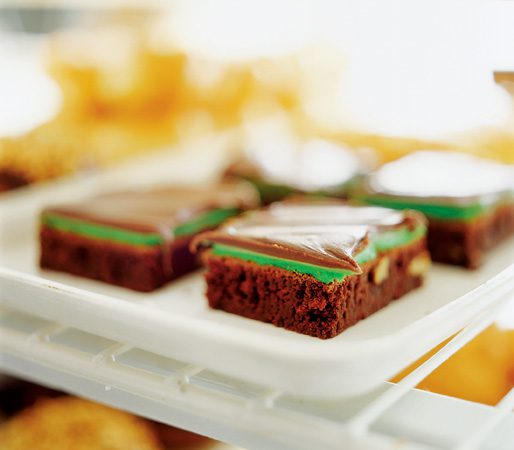Cougar Eats: A BYU Dining History
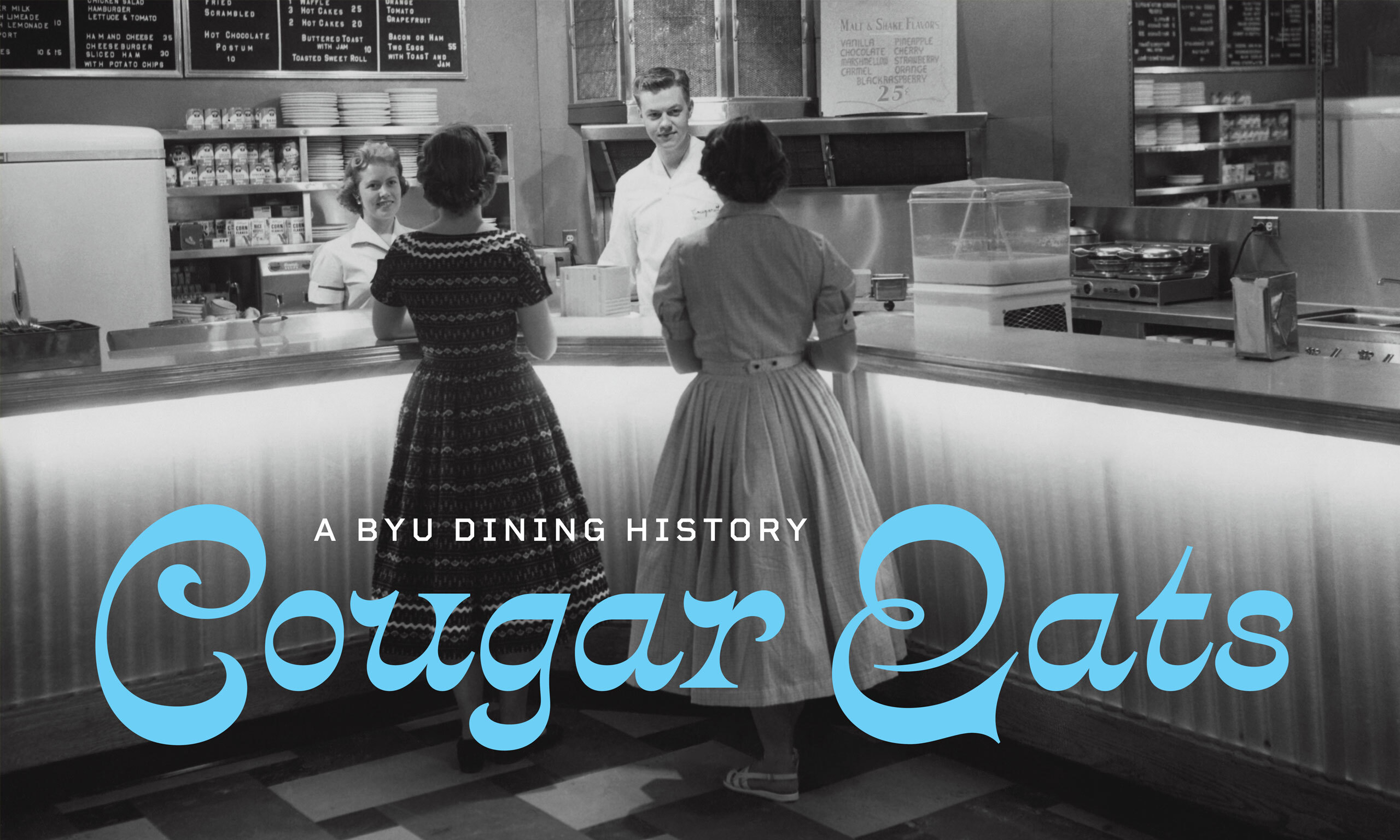
Enjoy a hearty helping of memories from nearly 150 years of student sustenance.
By Peter B. Gardner (BA ’98, MA ’04, MBA ’22) in the Summer 2022 Issue
Want to fill a mind? First you’ve got to fill a belly.
Keeping young bodies fueled has been a key concern for BYU ever since its academy days. In the early years, out-of-towner students found room and board with faculty and other Provo families. Treated as regular members of the household, the students would crowd in at the dinner table with their host families—and often pitch in with cooking and dishes.
Over the decades a variety of food establishments popped up in downtown Provo along the bustling juncture of Center Street and what became known as University Avenue. Students could walk over to the famous Sutton’s Cafe for lunch or meet up after classes for ice cream or a fountain drink at Keeley’s. In 1914 the Hotel Roberts offered 35-cent breakfasts and lunches for students and would long be the venue of choice for school banquets. Provo Bakery provided rolls and fresh bread starting in the 1890s, and various local grocers competed for students’ spare nickels and dimes.
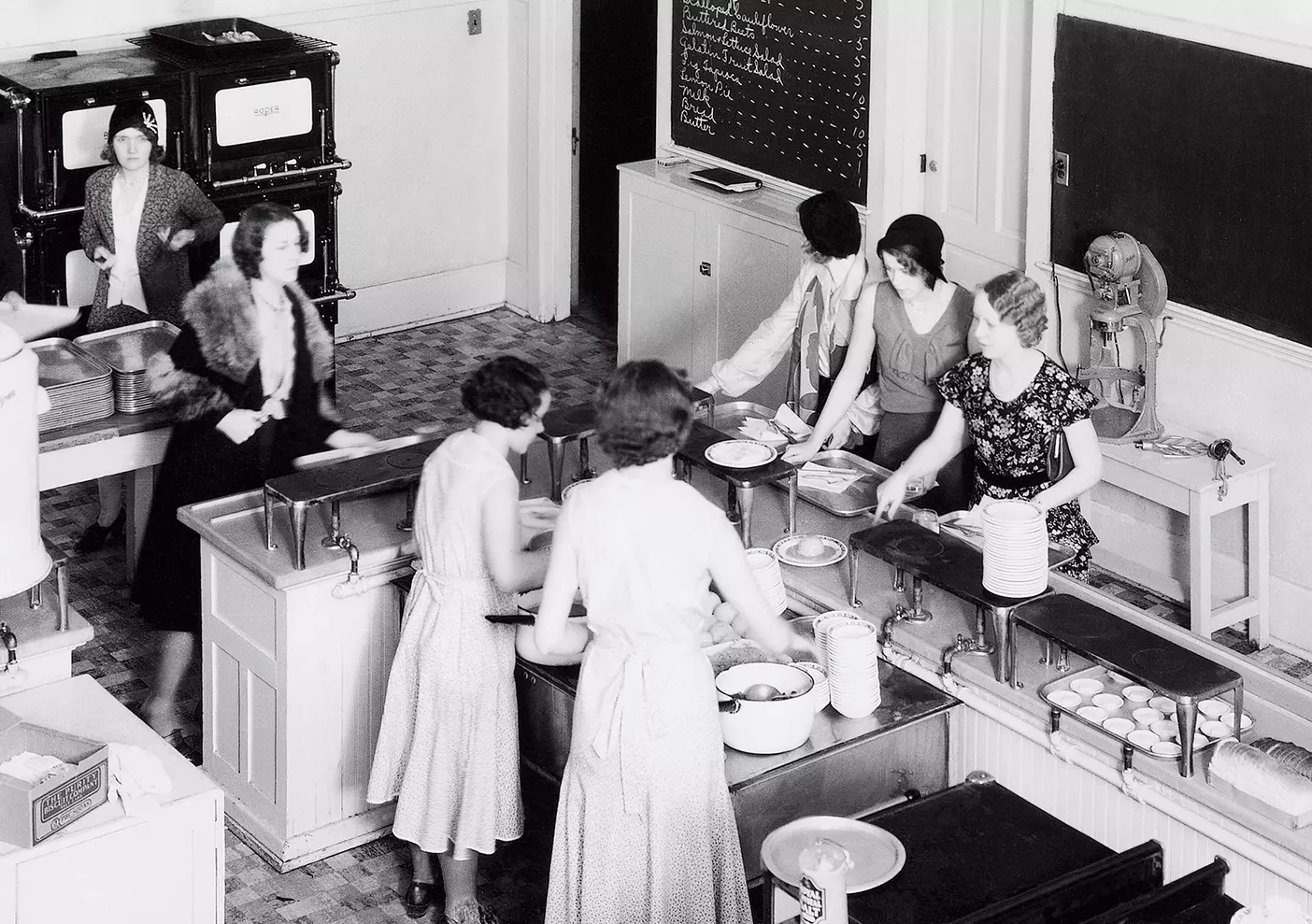
Except for a short-lived experiment with an academy boardinghouse in the 1880s, BYU didn’t get into the business of providing meals for half a century, when, in the mid-1920s, the Home Economics Department opened its kitchen/laboratory to diners. On the top floor of the Arts Building on Lower Campus, the BYU Cafeteria helped many students get through lean Depression years, offering “Balanced Meals at Low Cost.” For 27 cents students could load up their tray with creamed dried beef, buttered beets, gelatin fruit salad, a slice of buttered bread, and a glass of milk.
As the student population grew before World War II and then exploded after, campus dining labored to keep pace. Allen and Amanda Knight Halls (built in the late 1930s) included small kitchens and dining rooms, where students could get credits toward their housing bill by helping in the kitchen and performing other upkeep tasks. To feed local servicemen, in 1941 the basement of the new Joseph Smith Building was converted into a cafeteria that would become a campus mainstay.
Food options were expanding across campus at mid-century—but was the fare any good? The early reviews, it turns out, were mixed at best. As he began his presidency in 1951, President Ernest L. Wilkinson (BA ’21) claims he heard more complaints about the quality of food than about any other issue. On top of that, campus dining was losing $18,000 a year.
When Wilkinson charged Ben E. Lewis (BS ’40) with remedying these problems, the director of auxiliary services walked over to the bowling alley. Lewis regularly took his lunches at Regal Lanes, just west of campus, and he’d been impressed by Wells and Myrle Cloward, the young couple working behind the grill. The Clowards had met as teens working in neighboring Provo restaurants and together had already run two successful restaurants of their own. As a sailor in WWII, Wells had been trained in mass food production, serving 3,000 sailors three meals a day on his Pacific transport ship.
Despite these credentials, the Clowards weren’t biting as Lewis repeatedly pitched the idea of taking over BYU’s food services. It would be a huge pay cut, and they were living their dream at the Regal Grill. But then, in November 1952, that dream went up in smoke when a fire broke out at the bowling alley. “We stood out in front and watched fire wipe out our business, the business which we had struggled day after day to make successful,” Wells recalled.
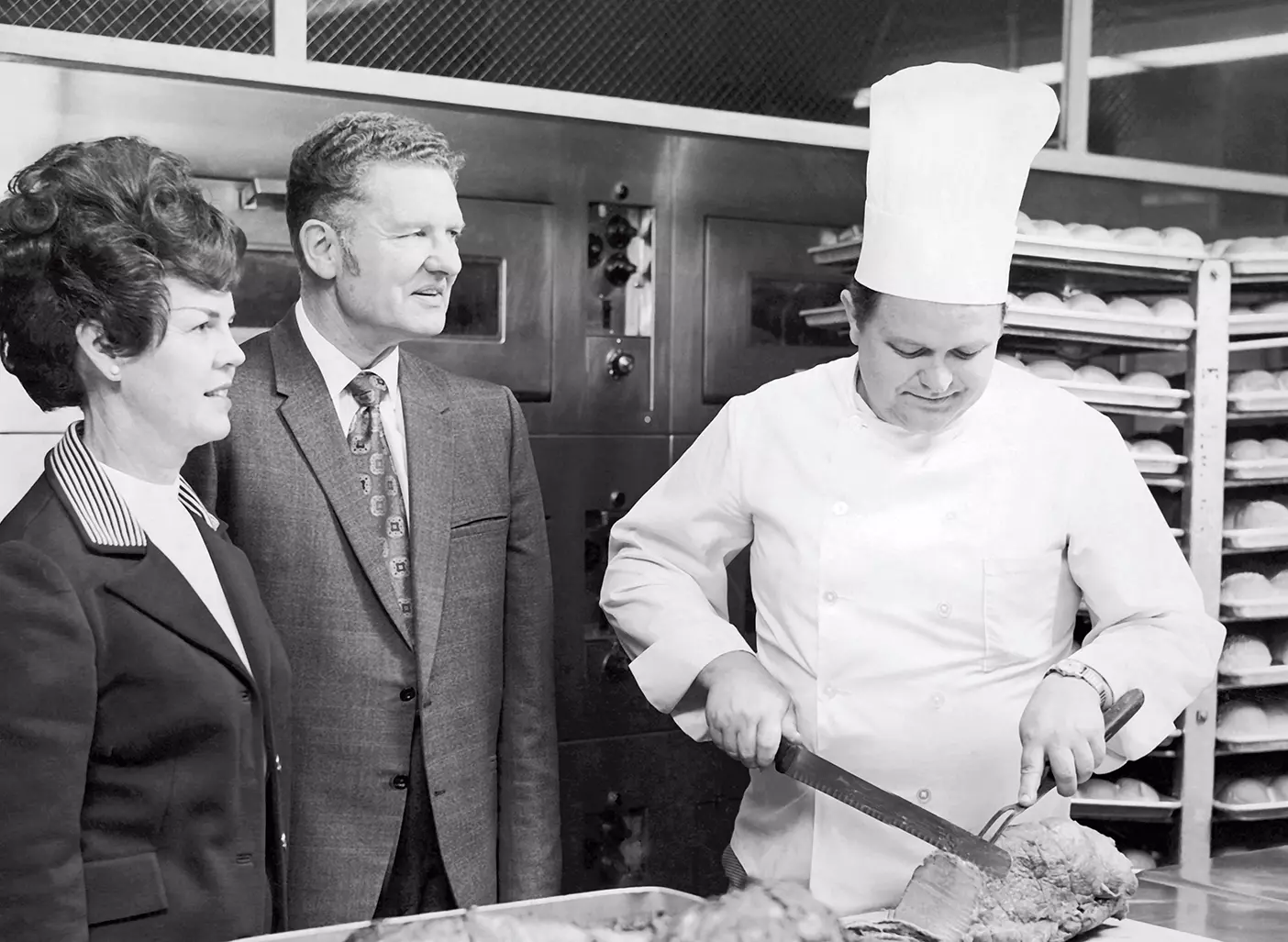
And so the Clowards reluctantly signed on to work at BYU, marking a turning point in BYU’s food history. Not only did they quickly make the enterprise profitable, but they also led efforts over three decades to build major dining facilities like the Cannon and Morris Center cafeterias and the state-of-the-art Wilkinson Center kitchen and Cougareat cafeteria. Along the way, they brought national acclaim to BYU and added touches to campus’s distinctive food culture—like the BYU mint brownie, a 1960s Myrle creation. When the Clowards retired in the 1980s, BYU was recognized as having the largest food operation of any single institution in the western United States, serving 45,000 meals per day and employing more than 1,250 students each semester.
In the years since, BYU has remained “one of the largest and most diverse collegiate food services in the country,” says Dean A. Wright (BS ’74), director of Dining Services from 1997 to 2022, though student tastes and dining approaches have evolved. The Cougareat cafeteria with its homestyle dishes was replaced with a food court in the 1990s, and a handful of new campus eateries sprung up around campus—from the Museum of Art Café (1993) to the Eyring Science Center’s Pendulum Court dietetics lab and café (1998) to Harvey’s (2019), a burger joint in the new Engineering Building. A café inside the Harold B. Lee Library is even in the works. It’s just one more way BYU is intertwining the consumption of food and facts—sustaining both body and mind and building sweet and savory campus memories for generations of students.
It’s as Wells Cloward liked to say, “There’s nothing quite as close to people’s hearts as the food they eat.”

1884–86
Brigham Young Academy experiments with a boardinghouse on Center Street and 100 West, housing and feeding students breakfast, lunch, and supper for $10 per month.
1920s
The Home Economics Department opens the “B.Y.U. Cafeteria” on the top floor of the Arts Building on Lower Campus, providing healthy meals at low cost.
1938–39
Allen and Amanda Knight Halls open with small kitchens and dining rooms.
1941
A cafeteria is opened in the basement of the Joseph Smith Building to serve soldiers stationed in and near Provo. A snack bar, called the Cougareat, is added in 1953. Altogether, the Joseph Smith Building could serve 150 at a time.
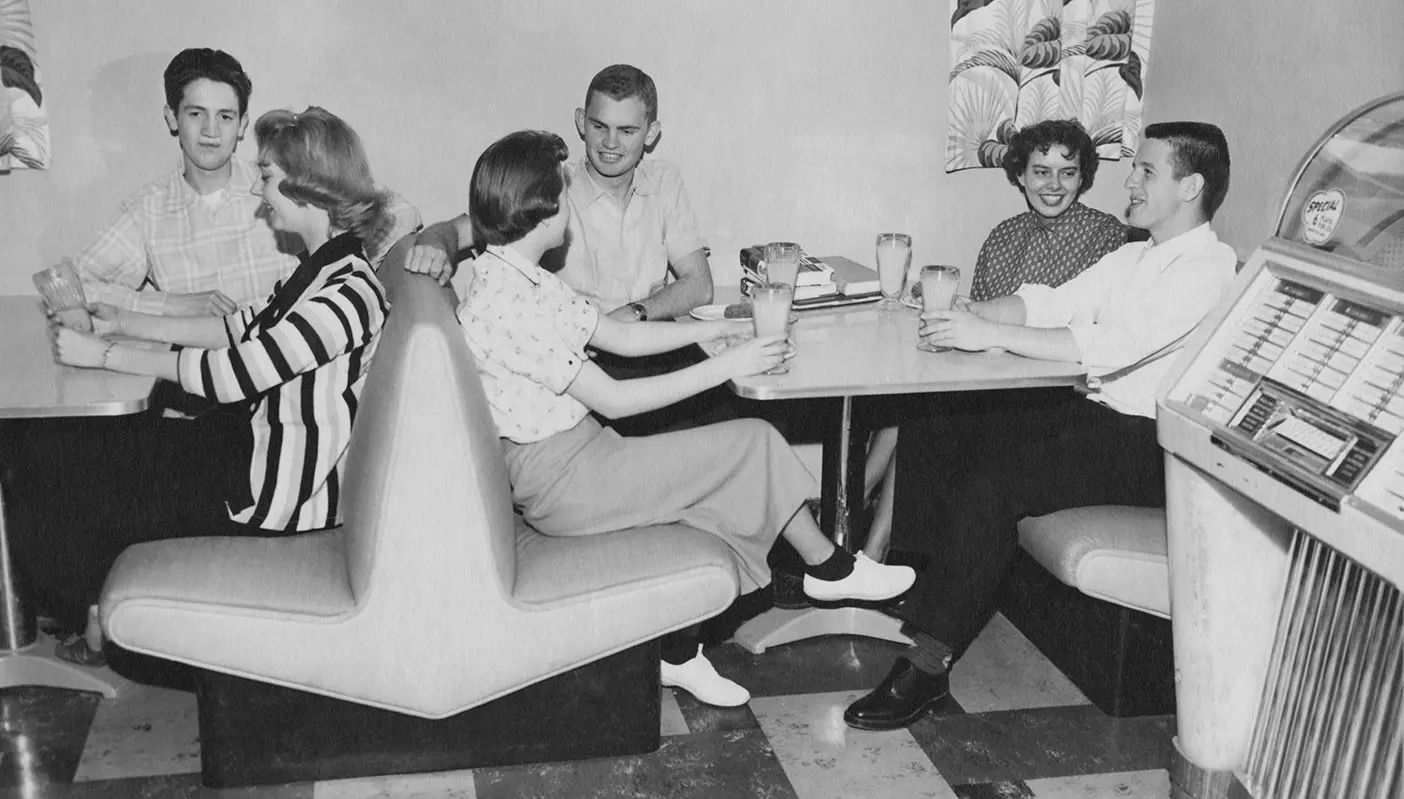
1945–47
Wymount Village, made up of repurposed army barracks, includes a long, one-story dining hall for its residents.
1946
BYU operates a 24-acre farm in northern Provo, providing milk for the campus community and students with experience in animal husbandry. BYU added a poultry farm near campus five years later.
1947
The Knight-Mangum Hall opens with a dining room intended for 200 women that would serve twice that due to demand.
1949
In a Quonset hut on campus, the College of Biological and Agricultural Sciences establishes the BYU Dairy Products Laboratory. Later taken over by Food Services and known as the Creamery, the operation provided campus customers with fresh milk, cheese, and ice cream.
1952
BYU hires Wells and Myrle Cloward to oversee BYU Food Services. Over three decades, the couple led BYU’s efforts to meet the needs of a booming, hungry campus.
1953
BYU Catering Service begins providing breakfasts, luncheons, banquets, and receptions. Take Out Catering serves student wards and other outside clients.
1954
BYU plugs in its first two vending machines (featuring fresh fruit and sandwiches). By the 1980s there were approximately 400 vending machines on campus.
1956
Kent Heaps begins selling pizza from a café at the corner of 800 North and 100 East. Renamed Heaps of Pizza, the student mainstay is now called Brick Oven.
1957
BYU purchases 440 acres of farmland in Spanish Fork, along with 160 acres of adjoining land. The Spanish Fork Farm would eventually feature 450 dairy cows and a 6,000-tree orchard, providing milk products and fruit for campus and work-study opportunities for students.
1958
The Cannon Center cafeteria begins serving students in the new Helaman Halls residential complex. Coupled with the Morris Center at Deseret Towers (1964), the cafeterias could accommodate 2,000 students at a time.
1958
Institution Magazine honors BYU for excellence of service, design, layout, sanitation, and quality of food services.
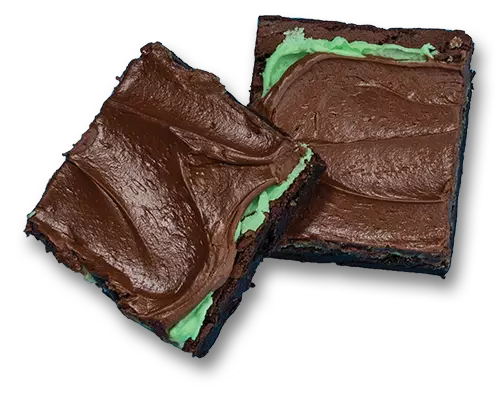
Early 1960s
Myrle Cloward develops the mint brownie: a fudgy treat with a layer of mint icing topped with chocolate icing.
1964
The Wilkinson Center opens with a modern kitchen, a 1,000-seat cafeteria and snack bar, and support for campus catering and take-out services. On the top floor is a restaurant with expansive views and a floor for dancing.
1964
The Creamery moves into the Dairy Products Laboratory Building, a permanent structure next to Deseret Towers.
1965
International Institutions National honors BYU dining with its Award for Excellence.
1967
The Cougareat is moved from the Joseph Smith Building to the Wilkinson Center.
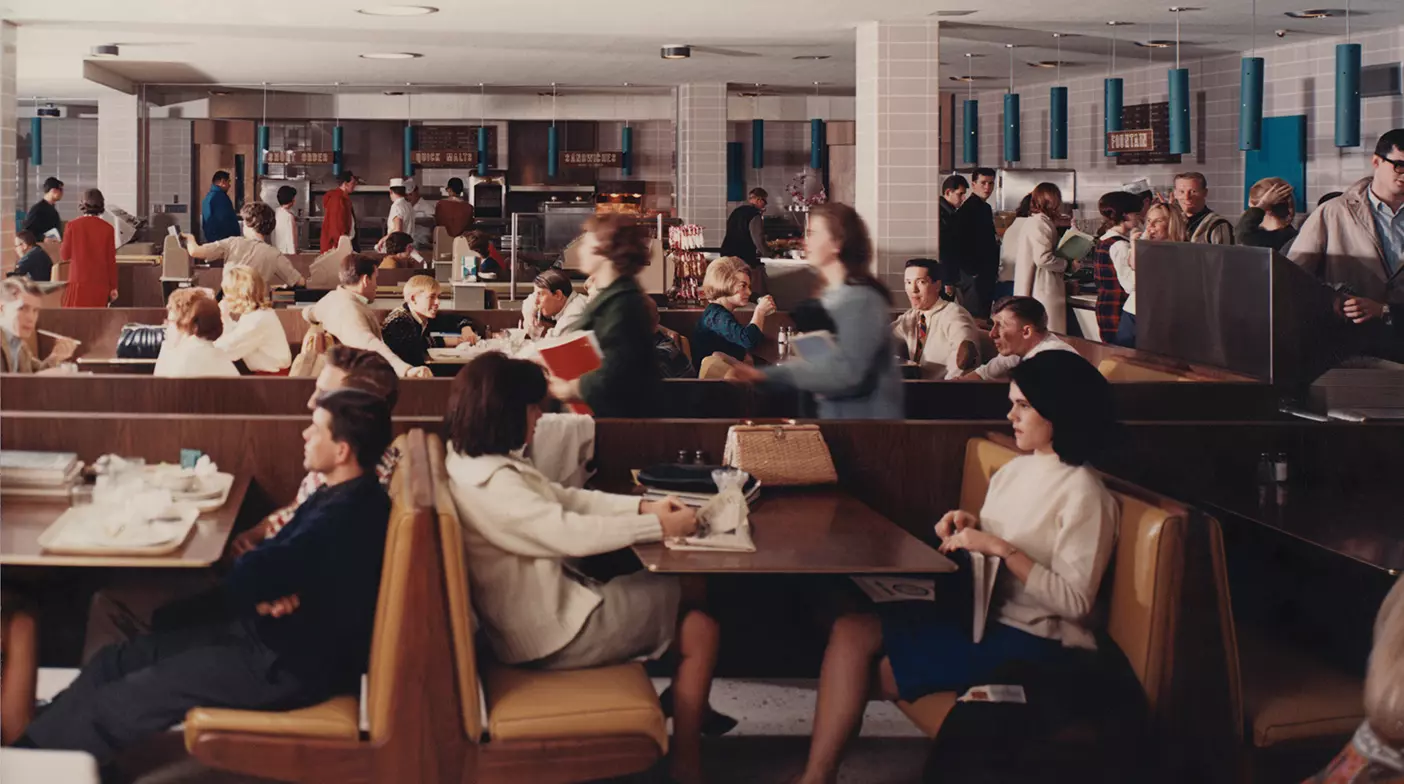
1982
BYU receives the Utah Restaurant Association’s Golden Spoon Award, marking the first time the designation was given to a non-restaurant.
1993
The Museum Café, an upscale bistro, is part of the new Museum of Art.
1997
The Cougareat is remodeled to become a mall-styled food court. The first franchise is Taco Bell.
1998
The Pendulum Court Cafe, a dietetics lab, opens with the remodeled Eyring Science Center.
1998
The MarketPlace Café opens in the Tanner Building and in 2008 is expanded to become the Blue Line Deli and Market, a New York–styled deli.
2000
BYU opens a remodel of an acquired grocery store—formerly Kent’s Market. Dubbed the Creamery on Ninth East (CONE), the facility includes a 1950s-style diner and is the first full-service grocery store on a US college campus.
2001
BYU wins an Ivy Restaurateurs of Distinction Award.
2004
BYU undergrad Jayson G. Edwards (BA ’16) starts selling J Dawgs from a shack just south of campus.
2004
The new Student Athlete Building features Legends Grille, a sports-themed eatery with a menu influenced by BYU athletics nutritionists.
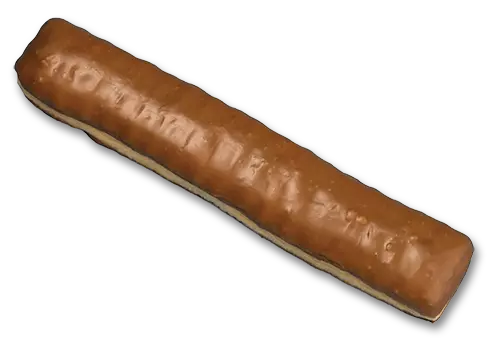
2006
The Cougar Tail, a 15-inch maple bar, is first sold at BYU sporting events.
2008
The Commons at the Cannon Center, featuring a menu with international options, opens in the Helaman Halls complex and replaces the Cannon Center cafeteria.
2009
The Culinary Support Center—a remodel and expansion of the Dairy Products Laboratory Building—begins preparing soups, salads, breads, pastas, and, of course, ice cream.
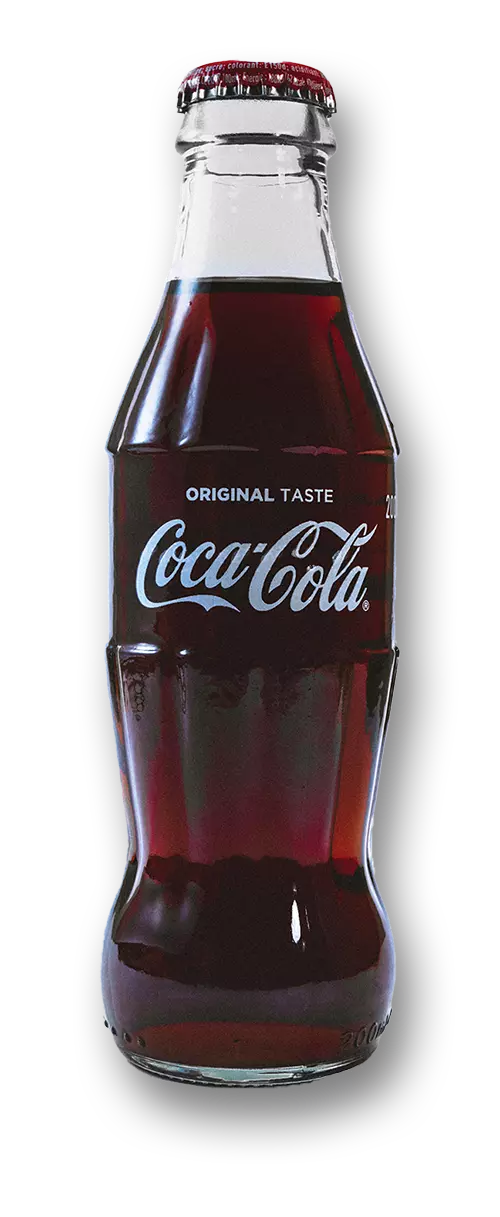
2017
BYU begins selling caffeinated Coca-Cola products on campus.
2019
Two new campus restaurants are built: Milk and Cookies, a café in the remodeled Cougareat featuring BYU’s famous beverage and creative cookie combinations, and Harvey’s (named for father of stereophonic sound Harvey Fletcher [BA ’07]), a place for burgers and gelato in the new Engineering Building.
2022
BYU sells its farmland, leased to an external company since 2004, to builder D.R. Horton, which will develop a planned community.
2022
A café is announced for the Harold B. Lee Library.
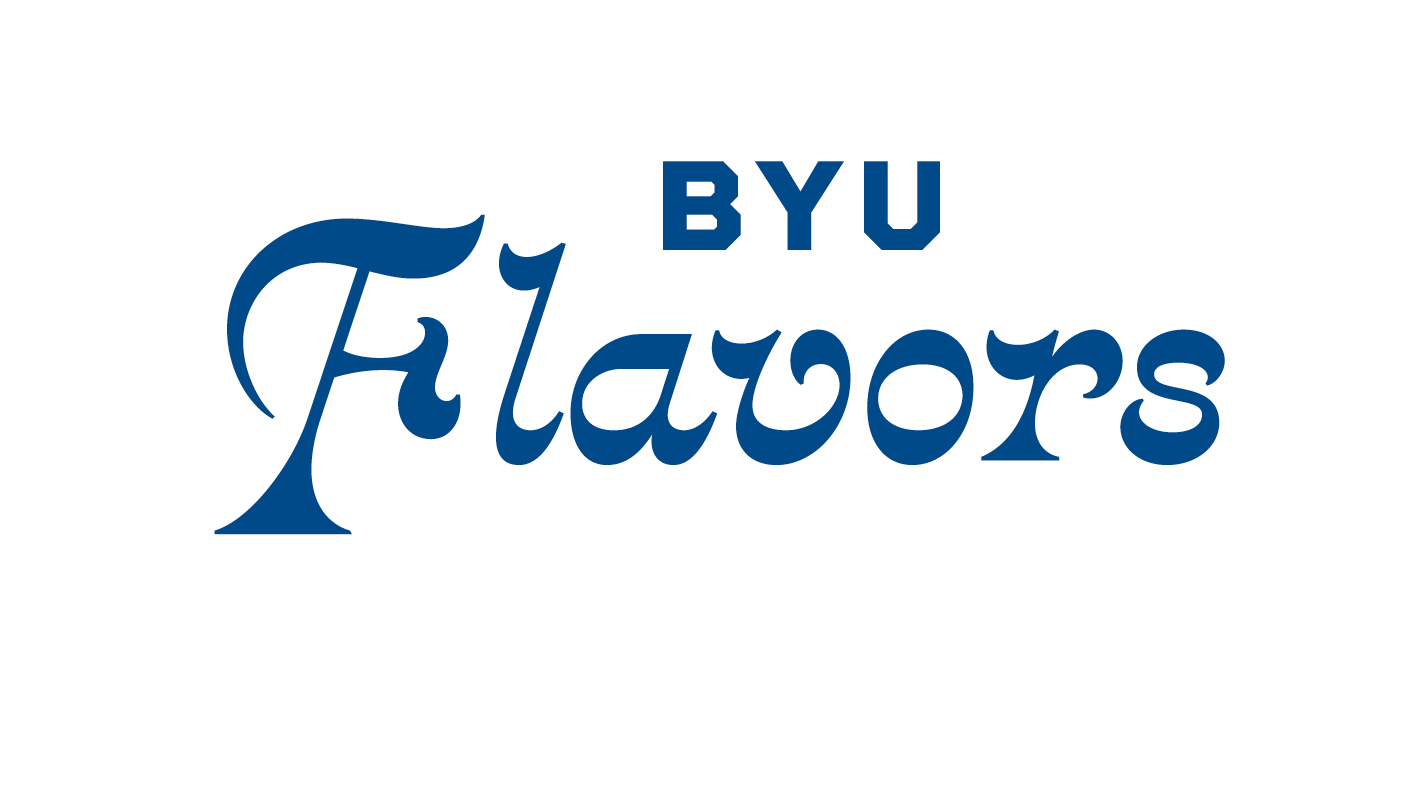
Sparkling Yogurt
Patented by Lynn V. Ogden, a BYU professor of food sciences, sparkling yogurt was sold in the Creamery in the mid-1990s before being licensed to Yoplait.
Cougar Tails
Introduced in 2006, these massive maple bars are the best-selling non-drink item at football games ($72,000 in sales per football game). Cougar Tails have twice been declared ESPN’s Concessions Food of the Year.
Y Sparkle
Long before its exclusive beverage contract with Coca-Cola, BYU created all of its own fountain drinks. In the 1960s, Dining Services director Wells Cloward came up with this pink favorite.
BYU Mint Brownies
Based off a variety of mint-flavored brownies at BYU in the 1950s, in the early 1960s Dining Services associate director Myrle Cloward developed a signature brownie with a layer of mint icing covered by a layer of chocolate icing. Today BYU sells 140,000 annually.
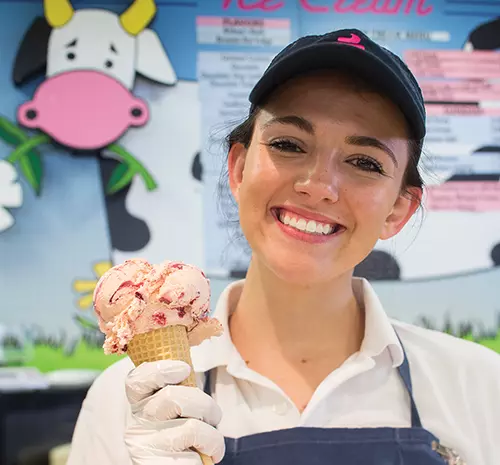
BYU Creamery Ice Cream
As a way to use excess cream at the Dairy Products Laboratory, BYU began selling vanilla, chocolate, and strawberry ice cream in 1949. Today’s most popular flavors are vanilla, Graham Canyon, and cookies and cream. The first flavor named for a BYU personality was LaVell’s Vanilla. Each president since Merrill J. Bateman and many coaches have also had their own flavors.
Navajo Tacos
A Cougareat favorite from the 1970s, this famous Native American frybread topped with chili, cheese, lettuce, and sour cream can still be found on the menu at the Commons at the Cannon Center.
BYU Ranch Dressing
Developed in the 1990s, BYU’s distinctive ranch blend quickly became a hit. BYU also added blue cheese and ranch light varieties. In 2002, in honor of the Salt Lake Olympics, BYU also developed a fry sauce.
BYU Milk
BYU’s famous chocolate milk has used the same Swiss-blend chocolate recipe since 1948. BYU added a strawberry milk in the 1980s and cookies and cream milk in 1998. In 2019, BYU released a mint-brownie-flavored milk to celebrate being named the nation’s No. 1 stone-cold sober university for the 21st consecutive year.

For all the worry about lactose these days, the BYU community’s long-standing love affair with all things dairy continues unabated. Milk, in its many BYU varieties—regular, chocolate, cookies and cream, mint brownie—is BYU’s most-imbibed drink after water. The wholesome beverage has become a playful part of BYU’s brand as “the most stone-cold sober” college in America. And ice cream? Over 72 years BYU has created more than a hundred distinctive flavors—two of the newest are Kalani Sitake Road (chocolate with marshmallows, brownies, fudge, and pecan pralines) and Pope’s Postgame Snack (vanilla with chocolate rice crispies, chocolate chunks, and salted caramel). Not to mention BYU ranch dressing, a 1990s creation that compels many a devotee to arrange special trips to campus.
It all began when BYU opened the Dairy Products Laboratory in 1949. Located in a Quonset hut—a corrugated-steel upside-down halfpipe of a building—the outfit received multiple truckloads of raw milk each day from nearby farms and processed milk, cheese, and ice cream for faculty, students, and the larger Provo community at a reasonable cost.
In 1957 BYU purchased a large farm in Spanish Fork, Utah, where agriculture faculty and students eventually worked with 450 head of cattle. Through careful breeding and animal husbandry (including three milkings per day), BYU cows were annually averaging 6,276 gallons of milk and 470 pounds of butter, more than double the national average.
The Creamery got a permanent home in 1964, when the university built the Dairy Products Laboratory Building near the new Deseret Towers. Updated in 2009 as the Culinary Support Center (CSC), the site churns out nearly 200,000 gallons of ice cream each year, sold at the CSC store front, the popular Creamery on Ninth East (CONE) ice cream counter, outlet locations around campus, and even Deseret Book stores.
Feedback Send comments on this article to magazine@byu.edu.




